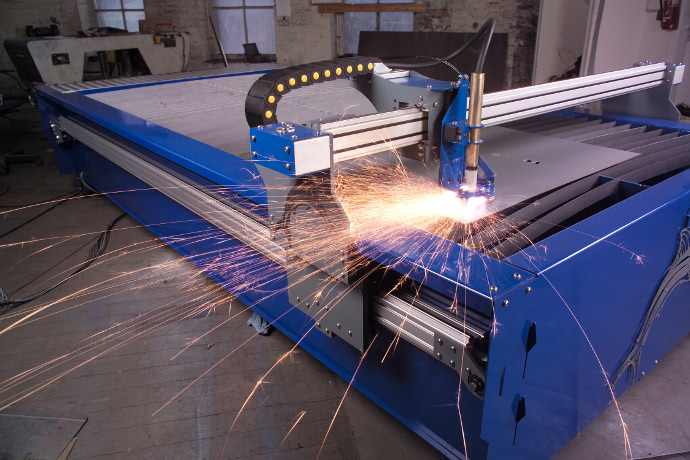Plasma machine carries out cutting of ferrous, non-ferrous metal and stainless steel. In order for the process to proceed quickly, and the cut is as accurate as possible, 2 parameters must be taken into account: the thickness of the metal and the power of the device. Professionals from Center Reservoir Service explained which non-ferrous and ferrous metals can be cut and how to correctly calculate the setting of the equipment. The company's services are presented at the link https://rezervuary .com /g27854211-porezka-metala-mashinoj .
Classification of plasma machines for cutting non-ferrous and ferrous metal
The ability to cut a particular metal depends on the type of plasma machine. The cutting process takes place thanks to plasma, which by its nature is air heated to 30,000 ° C. Due to the conduction of current, the metal melts and is blown out of the cut.
Transformer plasma machines are used to work with sheet metal up to 40 mm thick. The inverter cuts to a shallower depth - up to 30 mm. The latter type of plasma machines has an undeniable advantage: it consumes significantly less electricity and gives higher efficiency rates (+ 30% in comparison with a transformer plasma cutter).
A contact plasma cutter requires touching a ferrous or non-ferrous metal to start cutting it, most often this model is used when working with sheet thicknesses ranging from 10 to 15 mm. The non-contact is excellent at a depth of 20-80 mm.
An example of calculating power for different metal thicknesses
The calculation of the maximum possible thickness of non-ferrous, ferrous metal and stainless steel is based on the power required to cut 1 mm of material.
For cutting 1 mm of non-ferrous metals, such as brass, aluminum, copper and its alloys, 6 A is required. For ferrous metal and stainless steel - 4 A.
Calculation example: for cutting stainless steel with a thickness of 20 mm, 20 mm * 4 A = 80 A will be required. If the same equipment is used for a copper alloy of a similar thickness, the calculation will look like: 20 mm * 6 A = 120 A. Plasma cutter power for ferrous and non-ferrous metals are selected according to a larger value with a margin of 25-30%, which is necessary to exclude the possibility of overloading equipment.
Maximum cutting thickness for various metals:
-
stainless steel (alloy, carbon) - 50 mm;
-
copper and alloys - 80 mm
-
aluminum - 120 mm;
-
cast iron - 90 mm.
Plasma cutters manufacturers indicate on their products the maximum thickness of the "dirty" cut, which is always 25% more than the "clean" cut. If the depth of cut for ferrous metal is specified within 12 mm, then the actual thickness will not go beyond 8-9 mm. This is a global practice that also applies to non-ferrous metals and stainless steel.





